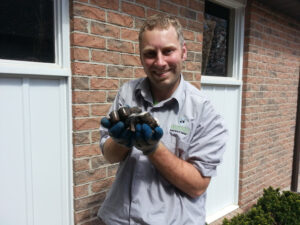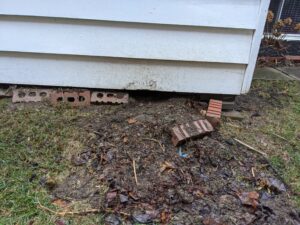After another long, cold Canadian winter, spring has finally sprung! With this new season comes warmer weather, fresh air, and undoubtedly, more wildlife sightings across both urban and rural environments.
In most of Ontario, wildlife baby season usually begins between mid-March and April, which means raccoons, birds, squirrels and skunks will soon become much more active than normal. Unfortunately for homeowners, this also means that their homes become susceptible to expectant mothers searching for a warm and safe place to birth their litters.
While baby animals can be quite adorable from afar, it becomes a completely different story when those baby animals and their mothers have invaded your living space. It’s also important to remember the unsanitary and potentially hazardous conditions animal dens and nests can cause in and around our homes.

The key to coexisting peacefully with wildlife is prevention; there are many things homeowners can do to prevent wildlife from choosing their property, and here are some of the things we recommend:
- Thoroughly inspect the exterior of your home, from top to bottom
- On the roof, look for any damaged or clogged gutters, or curled shingles, especially around the base of chimneys and roof vents.
- Vent covers can prevent wildlife from entering your attic, saving you the hassle and the money of having to remove them
- On the roof, look for any damaged or clogged gutters, or curled shingles, especially around the base of chimneys and roof vents.

-
- From ground level, keep your eye out for any cracks in the siding, brick, or sofft of your home, or any dug up grass around the base of sheds or additions
- Most mice and bats only need ¼” gap to enter, so be sure to make note of any vulnerable areas, and seal them up to prevent entry
- From ground level, keep your eye out for any cracks in the siding, brick, or sofft of your home, or any dug up grass around the base of sheds or additions

- Remove or secure all possible food sources
- Seal off garbage bins and compostables, clear your yard of bird seed, fence in gardens, and store pet food indoors
- Raccoons, squirrels, and skunks have developed impeccable skils to sourcing food in urban neighbourhoods, especially when they have a litter of mouths to feed
- Seal off garbage bins and compostables, clear your yard of bird seed, fence in gardens, and store pet food indoors

- Clean your yard & trim trees
- Trim tree branches, clean up overgrown bushes and remove unnecessary clutter
- Not only can wild animals use extra grass and fallen branches as nesting material for their babies, they can also use overgrown tree branches as bridges to climb on to your roof and access your attic
- Trim tree branches, clean up overgrown bushes and remove unnecessary clutter
After taking proper preventative measures, homeowners can rest assured that they have done their part in protecting themselves and their properties from the dangers of unwanted wildlife visitors. And even though this is one more item to add to a homeowner’s spring to-do list, it is much easier to prevent wildlife from entering your home than it is to remove them once they’ve settled in.
Our Skedaddle team has been practicing a safe and humane approach to wildlife removal since the beginning, so if you do have a wildlife invasion even after all the proper steps are taken to protect your home, please do not hesitate to call us.


